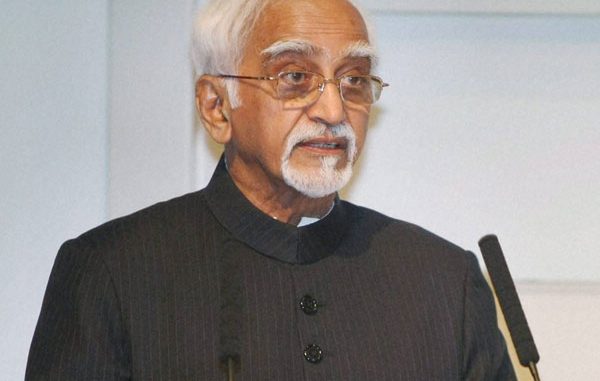
Vice President Hamid Ansari said today that despite the benefits of India’s economic growth being unevenly distributed the “losers” from the market-led reforms have not challenged the country’s democratic system.
Ansari said the new economic policies, including the liberalisation programme, were fostered in a democratic and deliberative environment and India was “now getting used to its much higher rate of growth.”
Addressing students at the University of Warsaw, the largest institution of higher education in Poland which was established in 1816, on ‘Seven Decades of Indian Democracy’, he spoke about the economic successes India achieved in non- traditional areas of exports such as the information technology industry, which rapidly grew to become a giant from a very modest beginning.
Another such area is that of pharmaceuticals, he said, where Indian ingenuity has brought huge reductions sometimes a cut of 80 per cent or so in the price for many essential drugs, like AIDS medicines.
“Such growth has allowed us to lift millions of Indians out of abject poverty and to offer them a better quality of life,” he said.
“We are modernising our agriculture, manufacturing and services and are trying to adopt digital transactions. Our human development index, modest as yet, is rising and in some more developed regions like Kerala, approximates those of developed nations,” he said.
He said while the net effect of economic growth has been an improvement in the quality of life of an average Indian citizen, these benefits have been unevenly distributed.
“And yet, it is a testament to the democratic deepening in India that the losers from market-led reforms have not challenged the democratic system of India,” he said.
India’s GDP now is almost USD 2.4 trillion from just about USD 273 billion in 1991, an increase of almost nine times. “Our per capita income, in the same period, increased almost 15 times in terms of current and 12 times in constant prices,” he said.
Ansari said the growing Indian middle class is now a market of global significance and despite the global slowdown, the United Nations World Economic Situation and Prospects 2017 Report projects Indian economy to grow by 7.7 per cent in 2017 and 7.6 per cent in 2018, making it the fastest growing large economy in the world.
Source: Daily News & Analysis

Leave a Reply